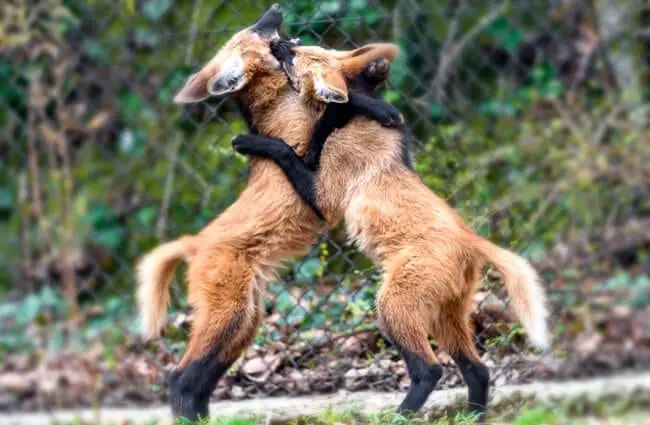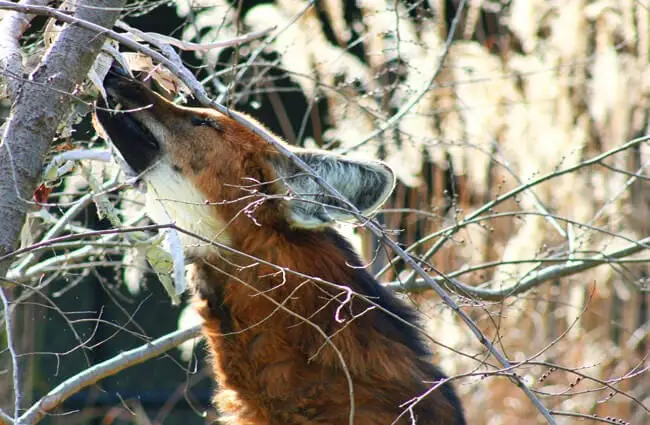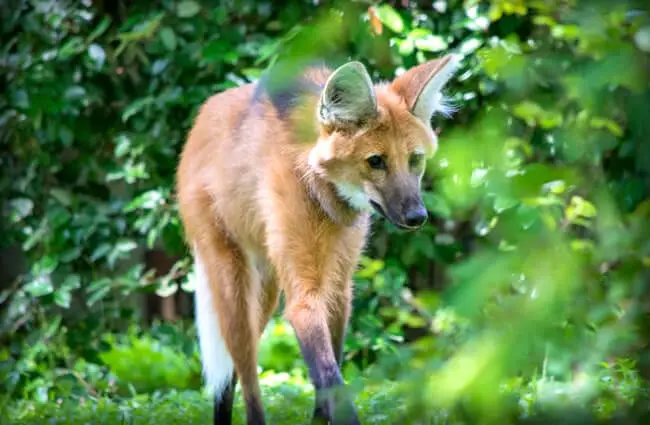A Striking Silhouette on the South American Savanna: An In-Depth Look at the Maned Wolf
The maned wolf, Chrysocyon brachyurus, is a captivating canid native to the grasslands, savanna, and woodlands of South America. Often described as a fox on stilts because of its unusually long legs, this unique animal isn’t quite what it seems. It’s not a fox at all, but a distinct species with its own evolutionary history. This guide will delve into the life of the maned wolf, exploring its habitat, behavior, diet, reproduction, and conservation status, providing insights for students, animal enthusiasts, and aspiring zoologists alike.

Habitat and Distribution
Maned wolves primarily inhabit the Cerrado biome of Brazil, but their range also extends into Argentina, Paraguay, Bolivia, and Uruguay. The Cerrado, a vast tropical savanna, provides the ideal environment for these animals, offering a mosaic of grasslands, woodlands, and wetlands. They are adaptable creatures and can also be found in open and semi‑open areas, including forests and scrublands. They generally avoid dense primary rainforests. Their preference for these habitats is linked to their hunting style and the availability of small prey.
Finding a maned wolf in the wild requires patience and knowledge of their preferred landscapes. Look for areas with tall grasses and scattered shrubs. They are most active during twilight and at night, making these the best times to search. However, encountering one is still rare, as they are naturally shy and elusive.
Evolutionary History
The maned wolf’s evolutionary path is quite intriguing. It’s not closely related to wolves or foxes, despite its name and superficial resemblance. Fossil evidence suggests it branched off from other canids millions of years ago. It is believed that the maned wolf evolved to fill a niche similar to that of a jackal, hunting smaller prey and scavenging when opportunities arise. The long legs are a relatively recent adaptation, likely driven by the need to navigate the tall grasses of the Cerrado and spot prey from a greater distance.
Diet and Hunting Strategies
Despite its canid classification, the maned wolf is an omnivore with a diverse diet. Small mammals, birds, reptiles, and insects make up a significant portion of their food intake, but they also consume fruits, vegetables, and roots. A particularly important fruit in their diet is the lobeira, a local berry that aids digestion and provides essential nutrients.
Their long legs aren’t just for show. They allow maned wolves to see over tall grasses, scanning for prey. They also use their excellent sense of smell to locate food underground. Hunting is typically done alone, and they are opportunistic feeders, taking advantage of whatever resources are available. They will also scavenge on carrion when possible.
Reproduction and Life Cycle
Maned wolves typically breed during the rainy season, from April to June. Gestation lasts around 90 days, resulting in a litter of two to six pups. Pups are born in dens, which are often burrows abandoned by other animals or natural cavities.
Young pups are entirely dependent on their mother for the first few weeks of life. Both parents participate in raising the pups, providing food and protection. Pups begin to venture out of the den at around three months of age and become independent by ten to eleven months. Maned wolves typically live for 10 to 15 years in the wild, though they can live longer in captivity.

Ecological Role and Interactions
Maned wolves play a vital role in their ecosystem. As both predators and seed dispersers, they contribute to the health and diversity of the Cerrado. By consuming fruits and vegetables, they help to spread seeds throughout the landscape, promoting plant growth. Their predation on small mammals helps to control populations and prevent overgrazing.
They interact with other animals in various ways. They may compete with other predators, such as foxes and jaguars, for food. They also serve as prey for larger predators, although this is relatively rare. Their unique scent‑marking behavior, using urine and feces, is an important form of communication with other maned wolves, establishing territories and signaling their presence.
Maned Wolves and Humans
Historically, maned wolves were hunted for their fur and meat. Today, the primary threats to their survival are habitat loss and fragmentation due to agriculture, urbanization, and road construction. They are also vulnerable to roadkill, as they frequently cross roads in search of food and mates. Conflicts with humans can occur when they prey on livestock.
Conservation efforts are underway to protect maned wolves and their habitat. These include establishing protected areas, promoting sustainable land use practices, and educating local communities about the importance of conservation. Responsible tourism can also play a role by providing economic incentives for conservation and raising awareness about the plight of this fascinating species.
Maned Wolves in Captivity
Caring for maned wolves in captivity requires specialized knowledge and attention. They need spacious enclosures that mimic their natural habitat, with plenty of vegetation, enrichment items, and opportunities for exercise. Their diet should be carefully balanced to meet their nutritional needs, including a variety of meat, fruits, and vegetables.
Enrichment is particularly important to stimulate their natural behaviors and prevent boredom. This can include puzzle feeders, scent trails, and opportunities to explore different textures and smells. Socialization with other maned wolves can also be beneficial, but it’s important to carefully monitor their interactions to prevent aggression. Avoid excessive human interaction, as they are naturally shy and independent animals.

Fascinating Facts
- Maned wolves have unusually long legs for their body size, making them appear almost like stilts.
- They are the largest canid species in South America.
- Their reddish‑orange coat provides excellent camouflage in the grasslands of the Cerrado.
- Maned wolves have a distinctive scent‑marking behavior, using urine and feces to communicate with other individuals.
- They play a crucial role in seed dispersal, contributing to the health and diversity of their ecosystem.
- They are known for their solitary nature, typically only coming together during the breeding season.

Encountering a Maned Wolf in the Wild
If you are fortunate enough to encounter a maned wolf in the wild, it’s important to observe it from a respectful distance. Avoid approaching the animal, making loud noises, or attempting to feed it. Give it plenty of space to move freely and avoid disturbing its natural behavior. Report your sighting to local conservation organizations or wildlife authorities, as this information can help to monitor populations and track their movements.

Conclusion
The maned wolf is a truly remarkable animal, a testament to the power of evolution and the beauty of biodiversity. Its unique characteristics, ecological role, and ongoing conservation challenges make it a fascinating subject of study and a symbol of the importance of protecting our planet’s natural heritage. By understanding and appreciating this incredible species, we can help to ensure its survival for generations to come.

![Red Angus Closeup of a beautiful Red Angus cowPhoto by: U.S. Department of Agriculture [pubic domain]https://creativecommons.org/licenses/by/2.0/](https://animals.net/wp-content/uploads/2020/03/Red-Angus-4-238x178.jpg)




![Red Angus Closeup of a beautiful Red Angus cowPhoto by: U.S. Department of Agriculture [pubic domain]https://creativecommons.org/licenses/by/2.0/](https://animals.net/wp-content/uploads/2020/03/Red-Angus-4-100x75.jpg)

